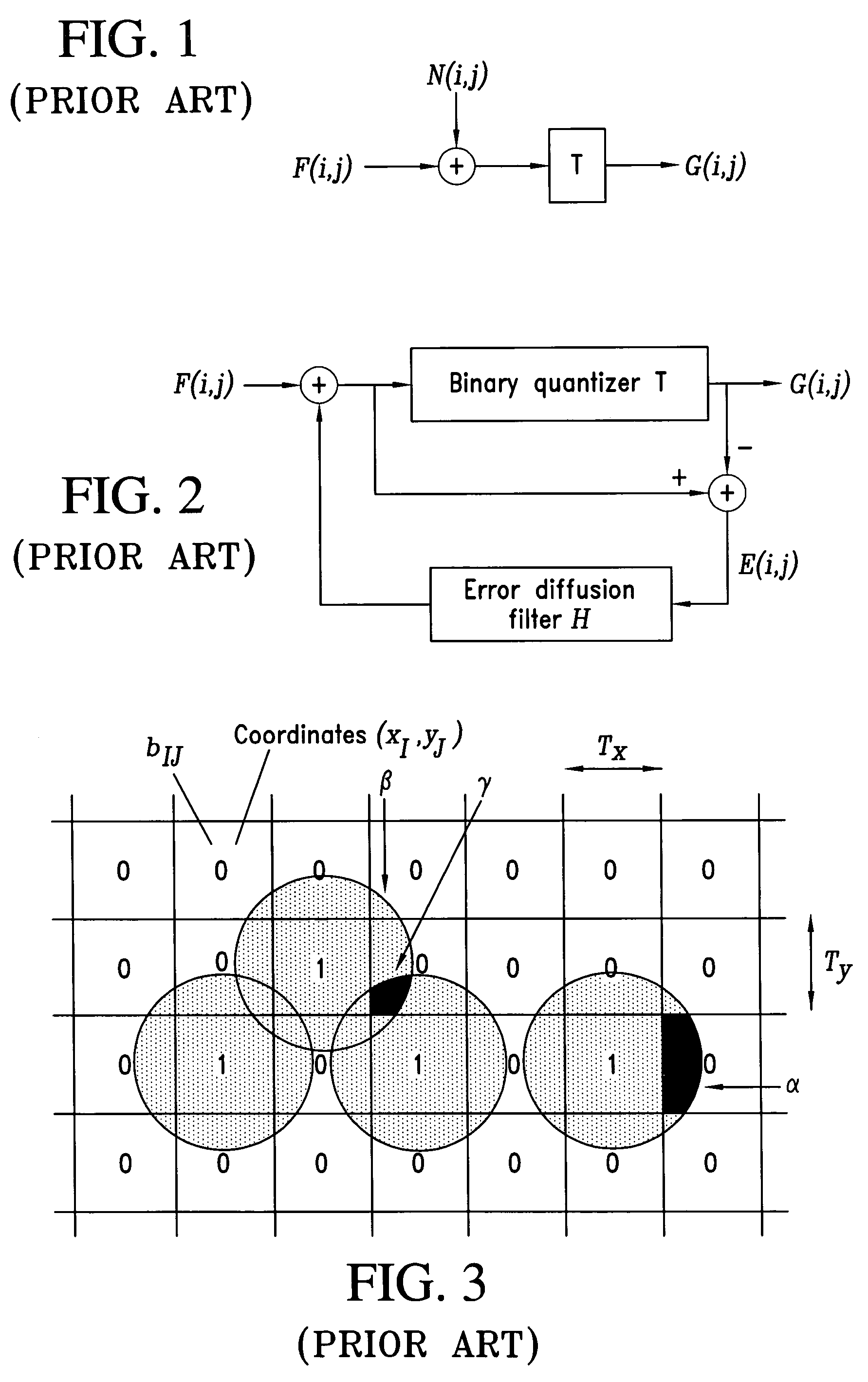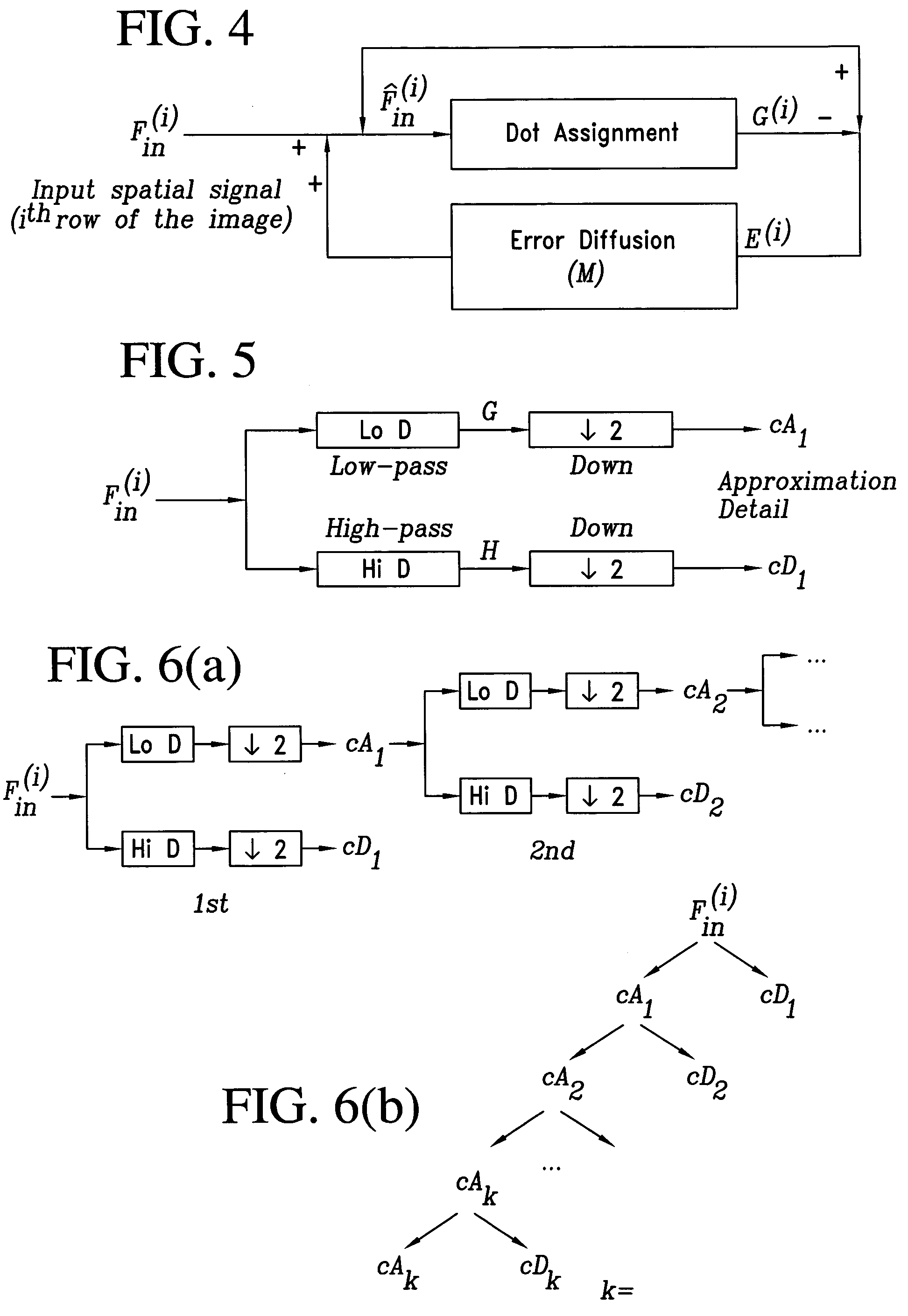Digital halftoning technique based on 1-D multi-scale dot assignment
a multi-scale dot assignment and digital technology, applied in the field of line-based half-toning process, can solve the problems of reducing the visual quality of half-toned images, requiring a much higher computational cost, and reducing the quality of half-tone images derived by this type of techniqu
- Summary
- Abstract
- Description
- Claims
- Application Information
AI Technical Summary
Benefits of technology
Problems solved by technology
Method used
Image
Examples
Embodiment Construction
General Principles
[0057]The invention is a line-based halftoning process involving the steps of performing a wavelet analysis for one row of pixels of the input image, and performing a halftoning algorithm to generate the corresponding output row.
[0058]As illustrated in FIG. 4, the halftoning method of the preferred embodiment of the invention involves a top-down dot assignment phase in which dots are assigned a new luminance value based on the wavelet analysis. In addition, the preferred embodiment may include an optional error diffusion phase in which the dot assignment is compared with the original luminance value and the quantization error is diffused to the pixel in the next one or several lines.
[0059]Those skilled in the art will appreciate that both the wavelet transform and multi-scale dot assignment concepts used by the preferred method are in general known. However, the method of the invention is different from previous work utilizing wavelet analysis and multi-scale dot a...
PUM
 Login to View More
Login to View More Abstract
Description
Claims
Application Information
 Login to View More
Login to View More - R&D
- Intellectual Property
- Life Sciences
- Materials
- Tech Scout
- Unparalleled Data Quality
- Higher Quality Content
- 60% Fewer Hallucinations
Browse by: Latest US Patents, China's latest patents, Technical Efficacy Thesaurus, Application Domain, Technology Topic, Popular Technical Reports.
© 2025 PatSnap. All rights reserved.Legal|Privacy policy|Modern Slavery Act Transparency Statement|Sitemap|About US| Contact US: help@patsnap.com



